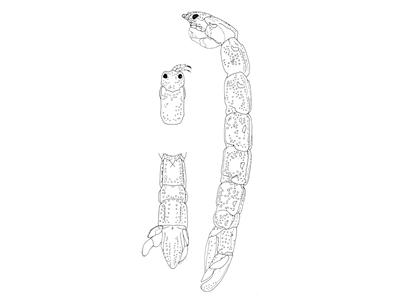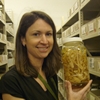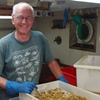Scientific Details
Head wider than long, strongly pitted dorsally and laterally; rostrum broad, rounded-truncate, longer than anterolateral lobes; cheek not distinct from lobes, shallowly curved ventral margin; eyes dark. Pereon with strong dorsolateral grooves complicated by pitting, extensively pitted dorsally and laterally. Pereonite 1 with obsotetely bilobed ventral keel, not produced anteriorly. Pereonites 4-6 with transverse step between major part of dorsal surface and the anterior depressed area which bears 4 large pits; dorsal pit a large keyhole-shaped notch at midpoint of this step. Pleonites 1-5 with small epimera, dorsolateral groove distinct, complicated by pits ,and not reaching back to posterior margin; pitted laterally but free of pits mid-dorsally. Pleonite 6 not separate from telson middorsally. Telson thick, especially terminally; 3 similar, low, smooth ridges (1 median, 2 lateral) separated by wide shallow, pitted depressions along most of length of telson and meeting anteriorly on a smooth pIane; deep, elongate slit at base of this plane near fusion with pleonite 6; narrowly rounded terminally. Uropod peduncle with a rounded medial lobe, endopod not reaching to end of telson, elongate, sharply rounded terminally, concave medial margin; exopods much exceeded by teIson dorsally and widely separate, dorsal margin sinuous, rounded posteriorly, little longer than peduncle.
Antenna 2, article 2 very short, dorsal flange rounded, much less than half width of front of head; flagellum of 6 articles, shorter than peduncle article 5. Mandible with a prominent, blunt molar lacking accessory tooth; palp reaching to about end of incisor, article 2 the longest with a single subterminal seta, article 3 narrow with a transverse row of 4 setae. Maxilla very stout, tapering to an almost straight, large toothed end; 5 hooks and 2 spines. Maxilliped articles 2, 3 broad, laterally produced; article 3 rounded terminally, 3 setae on medial margin, ventral face with 1 proximal seta, 1 on distal suture and 1 near outer distal corner; article 4 large, oval, subterminal, well exceeding 3, with 5 setae. Pereopod 1 with straight, blade-like palm, strongly inclined to axis of limb, few medial setae and lateral setae near palm edge; dactylus stout, unguis 0.25 its length.
Source: Poore, G.C.B. (1975) Australian species of Haliophasma (Crustacea: Isopoda: Anthuridae). Records of the Australian Museum, 29, 503-533.






